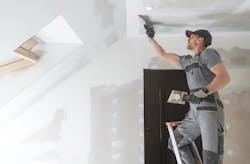Remodeling Market to Strengthen Through Next Year
Home improvement and repair spending will continue at a healthy pace through 2021 and into the following year, according to the Joint Center for Housing Studies of Harvard University (JCHS). By the first quarter of 2022, JCHS predicts a 4.8% growth in renovation and repair spending. Stimulus payments and home price appreciation are incentivizing homeowners to invest in their homes, a trend that moves past just DIY projects. Homeowners who opted out of professional work due to health concerns are returning, which will bring remodeling expenditures to $370 billion by early 2022.
The Leading Indicator of Remodeling Activity (LIRA) provides a short-term outlook of national home improvement and repair spending to owner-occupied homes. The indicator, measured as an annual rate-of-change of its components, is designed to project the annual rate of change in spending for the current quarter and subsequent four quarters, and is intended to help identify future turning points in the business cycle of the home improvement and repair industry. Originally developed in 2007, the LIRA was re-benchmarked in April 2016 to a broader market measure based on the biennial American Housing Survey.
The LIRA is released by the Remodeling Futures Program at the Joint Center for Housing Studies of Harvard University in the third week after each quarter’s closing. The next LIRA release date is July 15, 2021.
